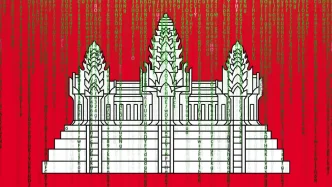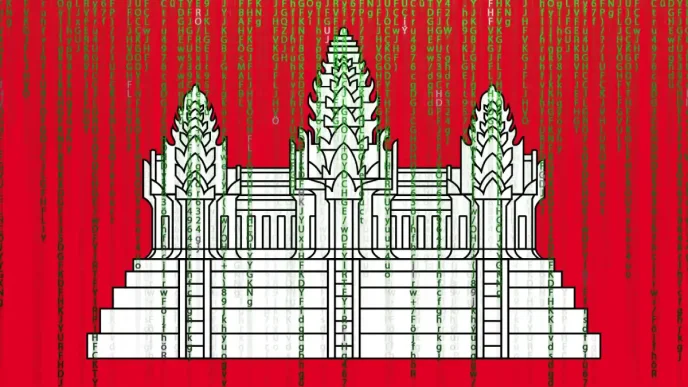In the heart of Ho Chi Minh City, near the bustling Bến Thành Market, a half-finished building stands as a stark symbol of one of Vietnam’s most devastating financial scandals. The structure, reportedly owned by Viva Land—a subsidiary of the once-mighty Vạn Thịnh Phát Group—has remained stalled since late 2022, following the dramatic arrest of Trương Mỹ Lan, the group’s chairwoman. Her fall from grace has left tens of thousands of bondholders grappling with staggering losses, while authorities scramble to deliver justice in a case described as the country’s worst financial fraud.
The Vạn Thịnh Phát-SCB scandal, involving Saigon Commercial Bank (SCB), has ensnared nearly 42,000 victims, many of whom were misled into purchasing fraudulent bonds worth VNĐ30 trillion (approximately US$1.24 billion). These investors, primarily SCB depositors, have yet to receive any compensation since Lan’s arrest in October 2022. Now, as HCM City authorities announce a compensation plan involving over VNĐ8 trillion (US$315 million) in seized assets, hope flickers for those who have endured years of uncertainty—though significant hurdles remain.
A Fraud of Unprecedented Scale
Trương Mỹ Lan, 68, was once a towering figure in Vietnam’s real estate sector. Since founding Vạn Thịnh Phát in 1992, she built an empire that spanned commerce, hospitality, and property, owning iconic assets like the 39-storey Times Square Saigon and the Windsor Plaza Hotel in Ho Chi Minh City. Her influence in Vietnam’s economic landscape was undeniable—until investigations uncovered a sprawling web of deceit.
Lan was accused of orchestrating a network of over 1,000 fictitious companies to issue fraudulent bonds, targeting unsuspecting SCB depositors. The scale of the deception shocked the nation, with losses amounting to billions of dollars. Last year, she was sentenced to life imprisonment for fraud and property appropriation in one trial, and in a separate hearing, received a death sentence for bribery, embezzlement, and violating banking regulations. The court also ordered her to repay VNĐ673.8 trillion (US$27 billion) to SCB—a sum that dwarfs even the most optimistic estimates of recoverable assets.
Under Vietnamese law, Lan could potentially avoid execution if she returns 75 per cent of the embezzled funds and cooperates with authorities. Whether this will materialise remains uncertain, as millions in assets—including properties, shares, vehicles, and frozen accounts—have been seized, but the process of restitution is mired in legal and logistical complexities.
Bondholders Left in Limbo
For the victims, the wait for justice has been agonising. Many bondholders, deceived into investing their life savings, have staged unprecedented protests across Vietnam, including gatherings outside the Ministry of Finance in Hanoi at the end of 2023. Their frustration is palpable: while the Central Bank of Vietnam has assured the public that savings accounts remain secure, it has explicitly stated that the bonds issued by SCB were not guaranteed, leaving investors with little recourse.
The HCM City Department of Civil Judgment Enforcement has now stepped in, provisionally seizing over VNĐ8 trillion for compensation. The department is managing these assets to facilitate fund recovery as per the initial judicial ruling, with plans to prioritise disbursement to bondholders once the second phase of the appeal judgment is active, expected next month. To support victims, a 24-hour hotline (1900 599802) has been established, and authorities are working with Tân Việt Securities Company (TVSI) to guide bondholders through the documentation process, requiring proof of identity and bank account details.
Yet, doubts linger over whether the seized funds will suffice to cover the vast losses. With 42,000 affected individuals and a total fraud amount exceeding VNĐ30 trillion, the current VNĐ8 trillion represents only a fraction of what is owed. Moreover, the legal proceedings surrounding Lan and Vạn Thịnh Phát are far from concluded, raising questions about the timeline for full restitution—if it ever comes.
A Broader Anti-Corruption Drive
Lan’s arrest and subsequent convictions are part of a wider anti-corruption campaign in Vietnam, which has intensified since 2021 under the leadership of the Communist Party of Vietnam (CPV). Often referred to as the “Blazing Furnace” initiative, this crackdown has targeted high-profile figures across politics and business, aiming to root out systemic graft and restore public trust in institutions. Lan’s case, however, stands out not only for its scale but also for the direct impact on ordinary citizens, many of whom were lured into the bond scheme with promises of high returns.
The scandal has also cast a harsh light on Vietnam’s financial regulatory framework. How could a scheme of this magnitude go undetected for so long? Critics argue that lax oversight and inadequate investor protections enabled Lan’s network to operate unchecked. While the Central Bank’s assurance about the safety of savings accounts offers some relief, the lack of guarantees for bond investments has sparked calls for reform to prevent similar frauds in the future.
If reforms are introduced, they may strengthen oversight of private lenders and enhance transparency in bond issuance—though such changes, if implemented, would come too late for the current victims. As of now, no concrete proposals have been confirmed, and public scepticism about the pace of systemic change remains high.
Economic and Social Fallout
The ripple effects of the Vạn Thịnh Phát scandal extend beyond the immediate victims. Vietnam’s real estate sector, a key driver of economic growth, has taken a hit, with stalled projects like the building near Bến Thành Market serving as visible reminders of the group’s collapse. Vạn Thịnh Phát’s once-prized properties, many located in prime areas of Ho Chi Minh City, now face an uncertain future as authorities determine how to liquidate assets for compensation.
Socially, the case has deepened public disillusionment with Vietnam’s financial institutions. For many bondholders, the loss of savings represents not just a financial blow but a betrayal of trust. Protests by victims, a rare occurrence in a country where public dissent is often tightly controlled, underscore the depth of anger and desperation. The government’s response—balancing restitution with maintaining social stability—will be a critical test of its credibility.
What Lies Ahead?
As the legal process unfolds, the focus remains on the bondholders awaiting compensation. The HCM City authorities’ efforts to disburse funds mark a step forward, but the scale of the fraud means that full recovery for all victims is far from guaranteed. Meanwhile, Trương Mỹ Lan’s fate hangs in the balance, with the possibility of evading the death penalty contingent on her ability to return a significant portion of the embezzled assets—a daunting prospect given the sums involved.
For Vietnam, the Vạn Thịnh Phát scandal is a cautionary tale about the risks of unchecked corporate power and inadequate regulation. It has exposed vulnerabilities in the country’s financial system and raised urgent questions about how to protect citizens from such predatory schemes in the future. If the government can deliver justice to the bondholders and implement meaningful reforms, it may yet salvage public confidence. But with legal proceedings ongoing and victims still waiting, the road to resolution remains long and uncertain.
The half-finished building near Bến Thành Market stands not just as a relic of a fallen empire, but as a monument to the thousands of lives upended by greed and deception. For now, Vietnam’s bondholders can only hope that the promise of compensation becomes a reality, and that lessons from this dark chapter will pave the way for a fairer, more transparent financial future.














